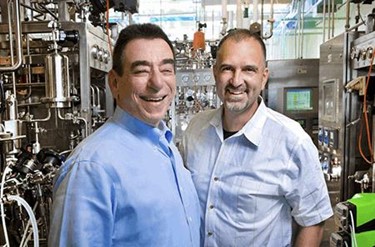Does Drug Development Require A Passionate Commitment?

By Rob Wright, Chief Editor, Life Science LeaderFollow Me On Twitter @RfwrightLSL

This is part of a series of blogs dedicated to my visit to the 36th Annual J.P. Morgan Healthcare Conference (JPM) and the 10th Annual Biotech Showcase (BTS).
It’s always interesting to me to see the varying degrees of passion (or lack of) exhibited by executives presenting or hosting breakout sessions at JPM each year. One company that showed a high degree of passion during its breakout session was Regeneron. For example, the final question posed to the Regeneron leadership team was around the “blue sky scenario” of the Regeneron Genetics Center, as well as the gene sequencing acceleration consortium they helped to form. These efforts have resulted in comprehensive genetic databases to not just discover and develop drugs, but elucidate on a large scale the genetic factors that cause or influence a range of human diseases, and hold the “blue sky potential” to develop new targets toward possibly impeding or preventing a disease from developing (i.e., anticipatory medicine). But what if the scope of such projects supersedes Regeneron’s core business activity of drug development? “We are all dreaming that the blue sky is going to turn out to be real,” responds, George Yancopoulos, M.D., Ph.D., president and chief scientific officer for Regeneron. But he continues, jamming his finger into the table after delivering every word (as if to drive home the point) saying, “We already have evidence that it’s coming [e.g., personalized prevention type medicine], and it is real.”
Yancopoulos believes exome sequencing will become an important part of a patient’s health record, something that is already being done by one of his company’s partners, Geisinger Health System, an integrated health services organization located in northeastern and central Pennsylvania. “They’ve already had examples of anticipatory medicine,” he stated. The Regeneron CSO shares a story about a young woman seeming to faint while playing softball; people assuming she was dehydrated. And so while Geisinger ER team treated the patient, they also checked to see if the woman had been sequenced (which she had), which led them to discover that she had a rare genetic mutation that predisposed her to a potentially fatal cardiac arrhythmia. So they put in a defibrillator. But Geisinger’s work didn’t stop there. “They brought in all of her first-degree relatives and found several others that also have the same mutation — and they put defibrillators in all of them,” he continues. “They’re saving people lives [pausing for emphasis], or they are saving people from significant events, resulting in better and more efficient healthcare delivery.” During his response, the lights on the desk before the Regeneron leadership team move from green, to yellow, and then to red, indicating the breakout session is over. But not for Leonard Schleifer, M.D., Ph.D., founder, president, and CEO of Regeneron, who seems compelled to build on what Yancopoulos stated. “I think it’s important to recognize that our work in genetics does not stop with the sequences,” he shares. In other JPM sessions that have reached this point (nearly a minute past their conclusion), most people have already begun to get up and head for the exits. And today (of all days) there would be even more reason to do so, for just down the hall Microsoft cofounder Bill Gates is preparing to give a lunch keynote address. But nobody moves. Glancing over my shoulder it appears as if everyone is leaning forward, eyes not glued to cell phones (a rare occasion at JPM), but trained on Yancopoulos and Schleifer. It was a powerfully connective moment, and something we need more of from biopharmaceutical industry leaders — the sharing of passion and commitment for the work they and their employees do.
Why Conducting The Breakout Session At JPM Is Important
Such displays of passion during JPM can usually only come out during breakouts, making me wonder why some companies consistently opt not to do a breakout. For example, I believe Pfizer has not participated in a breakout Q&A following its presentation for at least the past four years, maybe longer. On the surface it’s easy to understand why. Having the microphone removed, and then getting from the stage of the Grand Ballroom to the Borgia breakout in a short period of time is a hassle. The hallways are crowded, and many people are often trying to engage with you as you walk. The breakout rooms are small. If you are a big company making big news, the rooms are often overcrowded (not ideal for anyone who is claustrophobic) and hot. The questions not asked by the JPM analyst aren’t scripted, can come from anywhere, and sometimes be tough to hear. But a typical JPM PowerPoint (PPT) presentation tends to be (for the most part) a fairly dry recap of what happened last year, and let’s be honest, mainly focus on all of the good stuff your company has done. Unless you are the company founder, it’s probably pretty hard for a CEO (or whoever is conducting the JPM presentation) to convey the passionate commitment to patients on which most of these companies were founded! But as demonstrated by Regeneron, in a breakout session you can. Perhaps that is what the public needs to see and hear a little more of from biopharmaceutical industry leaders?
